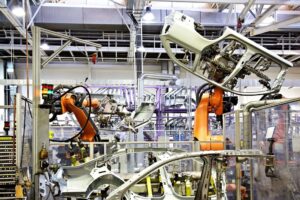You must have all read the quote, ‘To err is Human, to forgive Divine’ by Alexander Pope. A mistake committed for the first time can be pardoned, and a chance can be given to rectify that mistake. However, if the error is committed repeatedly, it can prove costly.
As a modern manufacturer in an era of volatile markets and ruthless competition, you cannot afford to make repeated mistakes. From disrupting production, increasing scrap quantity, overhead costs, labor inefficiency to declining the company’s bottom line, these mistakes can create havoc on your business.
Let us first look at each mistake and how you can avoid making them in 2025
Poor Inventory Control
Inventory is the hero of your manufacturing business. If inventory levels are not maintained properly and your shop floor runs out of key parts and materials amidst production, it will lead to delays and impact customer delivery.
Overstocking inventory can lead to increased purchase and storage costs, wastage of storage space, and inventory aging leading to material obsolescence and deterioration.
Poorly organized storage leads to difficulty in finding required parts and materials, leading to wastage of time, costs and labor. The chances of materials being damaged, lost and misplaced are also very high.
How to Avoid
With ERP software’s Inventory Management feature, you can keep track of your inventory in real-time, knowing precisely how much stock is present, its exact location, movement within your shop floor/warehouse and its consumption.
The ERP also updates inventory levels as and when they are procured and received during goods receiving and consumed during production. It also notifies you when stock levels are below threshold levels, preventing stockouts. Warehouse management ensures that you keep track of your inventory movement and storage at all times.
Inaccurate Production Tracking
Tracking production in real-time is not a luxury but a necessity today. Production tracking lets manufacturers get a tight grasp on inventory consumption, machine utilization, labor efficiency, and overhead costs. With real-time production data, it is easy for you to pre-empt any issues that might arise and take corrective measures even before they happen. This leads to streamlined production, less material wastage and cost control.
Failing to track production in real-time leads to miscommunication between departments, bottlenecks, piled-up work orders, machine breakdowns, poor decision-making and never-ending production delays.
Overuse of Machines and Equipment
Pushing machines and associated equipment beyond their operating capacity to speed up production and cut costs can lead to unprecedented mechanical failure. This leads to disruption in production owing to repairs that push costs upwards. Also, machines that operate under stress cause increased wear and tear of critical parts that lower accuracy numbers and efficiency leading to defective, low-quality products.
Lack of Flexibility
Customer demand fluctuations and its impact on production are a common thing in manufacturing. However, if a manufacturer is unable to factor in last-minute emergency orders, sudden changes to customer specifications or any change in requirements, it can result in delayed production and shipment.
Unmonitored Machine Performance
Lack of proper monitoring of machines during shop floor operations can lead to their excessive utilization, leading to unpredicted machine breakdowns or quality defects.
Constant running of machines without fine-tuning their settings for maximum efficiency leads to sub-optimal performance and defects.
How to Avoid
With an ERP’s Production Management, you can get a real-time view of your shop-floor operations. Personnel can keep track of data from anywhere at each manufacturing stage. They can track production progress including total resource utilization (labor, machine and materials), associated time and costs, product quantity produced and quality parameters.
With this, personnel can proactively respond to machine breakdowns and quality issues to prevent production and shipment delays.
They can also track raw material procurement, goods receiving, and inventory consumption in real time, ensuring optimum inventory levels at all times.
Improper Material Transport and Handling
Often, precious inventory such as raw materials, finished or work-in-progress goods, and parts get damaged due to improper material handling and over-transportation. This eventually leads to production delays, increased procurement/repair costs, shipment delays and dissatisfied customers.
How to Avoid
An ERP’s Warehouse Management automates warehouse operations by giving you a real-time, centralized view of your inventory storage and movement. It streamlines goods receiving, bin allocation, material tracking, order picking, inventory adjustment, dispatch and fulfilment. It improves warehouse efficiency and reduces inventory wastage, obsolescence and inventory ageing.
Lack of Preventive Maintenance Plan and Execution
Sometimes, with an increased focus on improving production and profitability, manufacturers tend to ignore the critical aspect of planned downtime and maintenance.
By not conducting regular maintenance of machines, equipment and parts, you can expect unpredicted breakdowns that disrupt planned production schedules and increase last-minute parts procurement and repair costs. Not to mention the safety risks to personnel and the shop floor arising out of breakdowns.
How to Avoid
With an ERP’s Equipment Maintenance capabilities, you can increase the life span of your machines, parts and equipment by planning, scheduling and tracking their maintenance activities. This reduces incidents of breakdown and ensures minimal maintenance, repair and overhaul costs. You can also keep track of equipment and machine warranties and avoid huge expenses arising out of machine breakdown post-warranty expiration.
Lack of Adequate Quality Control
Inadequate quality checks at various stages of production can lead to unchecked defects and product quality issues that are only discovered after post-production or post-customer delivery. This leads to unnecessary product recalls and rework that increases costs.
Failure to identify the root cause behind a particular defect allows recurring quality issues thereby damaging brand reputation and customer goodwill.
How to Avoid
An ERP’s Quality Management capability allows you to track quality parameters and checks at each production stage. This enhances product quality, customer trust and goodwill. It also allows you to conform to stringent industry standards such as TS/ISO 16949 (Automotive) & AS9100 (Aerospace) from product planning to delivery.
Lack of Technology Adoption and Workflow Automation
In today’s age of advanced technology, automation is a must for enterprises to achieve their goal of exponential growth and efficiency.
Failing to implement automation systems and relying on manual operating methods and silo-based systems increases human errors, slows production and significantly drives overhead costs. In the absence of any real-time tracking system, production optimization, labor efficiency, resource utilization, and quality control go down considerably.
How to Avoid
With ERP’s Workflow Automation features, you can automate critical enterprise workflows to eliminate silo-based tools, manual operating methods and time-consuming processes. You can reduce critical production time, operating costs, and improve overall enterprise efficiency.
Conclusion
Adopting modern ERP software ensures that you can avoid making critical mistakes that hugely impact your enterprise. After all, as a manufacturer, you want to cut costs, improve efficiency, on-time delivery, customer satisfaction and achieve profitability and growth. All this can be achieved with an ERP.






One Response
Just exploring your services